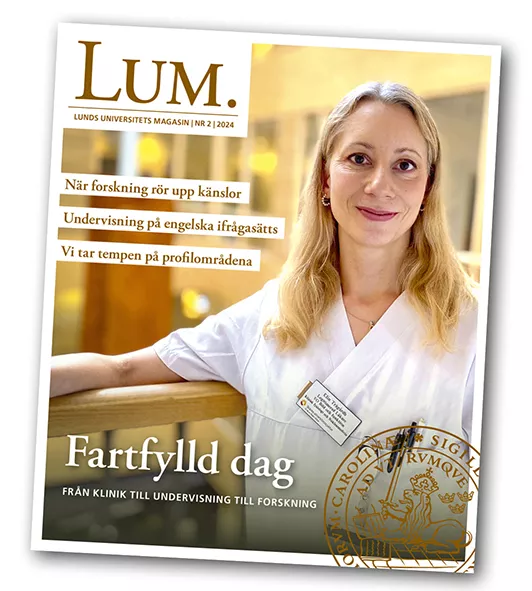As a medical student, Lars Edvinsson, now professor and consultant physician at Skåne University Hospital, was interested in the brain and its blood vessels. Already in the first semester of his medical degree programme, he went to the Anatomy building in Lund and knocked on the door of the neuroanatomy professor to investigate opportunities for research.
"'Everything has already been discovered', answered the professor at the time, and he asked me to try Histology instead. I did, and was well received, so that's how it went. Basic research can be very dry, so to jazz it up a little I chose to research migraine, which affects so many people's lives", says Lars Edvinsson.
Already in the 1980s, he suspected that CGRP, a fundamentally important signal molecule in the brain, played a central role in migraine headaches. CGRP protects the brain against changes in blood supply and ensures optimal circulation.
The first article got a lukewarm reception
In 1985 he published his first article on the subject – which got a lukewarm reception from academia.
"I pretty much got no reaction at all to the publication; everyone seemed to think it was just nonsense. There were many influential researchers all over the world focused on other molecules and not in the least interested in what I had discovered. Imagine having spent your life on a certain hypothesis – in that case it's difficult to abandon it."
But Lars Edvinsson didn't care that nobody believed in his results – he was sure of what he had discovered.
"We were a small research team at the time, so if the major researchers had thrown themselves over this finding, they would have left me behind immediately. So with hindsight it was actually a good thing that we got to continue our research in peace and quiet, although the migraine patients would most probably have wished the drug to be made available sooner."
Monthly injection helps 75 per cent of patients – more or less
Since January this year the drug, Aimovig, has been approved for sale in Sweden and it has previously been approved in the rest of the world. The medication consists of an injection, in a syringe similar to the ones used by diabetics, which blocks the receptor for CGRP on the surface of the nerve cells.
The injection, administered preventively once per month, has meant that 25 per cent of all patients have got rid of their migraines completely. 50 per cent see some improvement and get perhaps one attack per month, instead of suffering from chronic migraine. For the remaining 25 per cent of patients, the drug does not appear to affect the disease.
The migraine research has thus gone from obscure to now cutting edge. But what causes some people to be affected while others are not, is still not clear.
"Can anyone get migraines? This is a complicated question, to say the least. One hypothesis is that if you stress your brain enough, the answer is – yes. Another hypothesis deals with the 44 genes that have been found to be associated with migraines and that need to cooperate in order for the disease to be expressed. Heredity is a major factor.
Stress seems to be one of the most important triggers
Migraine is three times more common in women than men and almost 90 per cent of cases of chronic migraine, where the sufferer has more days per month with migraine than without, are in women. In particular around ovulation and menstruation, women have more frequent attacks of migraine. For many women, however, migraine improves after menopause. The nerves that regulate the headaches also start to disappear with age and this causes a reduction in migraines as the patient gets older.
Lars Edvinsson thinks that it is difficult to prove unequivocally what triggers a migraine attack. Although individual patients have their own explanations for why they suffer attacks, the studies that have been conducted have not succeeded in finding a common factor, but rather point to several factors that work together. Stress seems to be one of the most important triggers.
"There are many patients who blame red wine, for example, but research has in fact not succeeded in proving any connection. The migraine can quite simply occur when you relax after a working week and then you associate its onset with the wine. Regular habits for sleep, food and exercise can prevent attacks, but the absolute best advice is to avoid stress and being a woman."
Lars Edvinsson is now planning his next project, in which he will investigate how certain female hormones regulate CGRP signalling.
"We have new molecules we hope will plug the gap and help the 25 per cent of patients for whom the current drug doesn't work."



